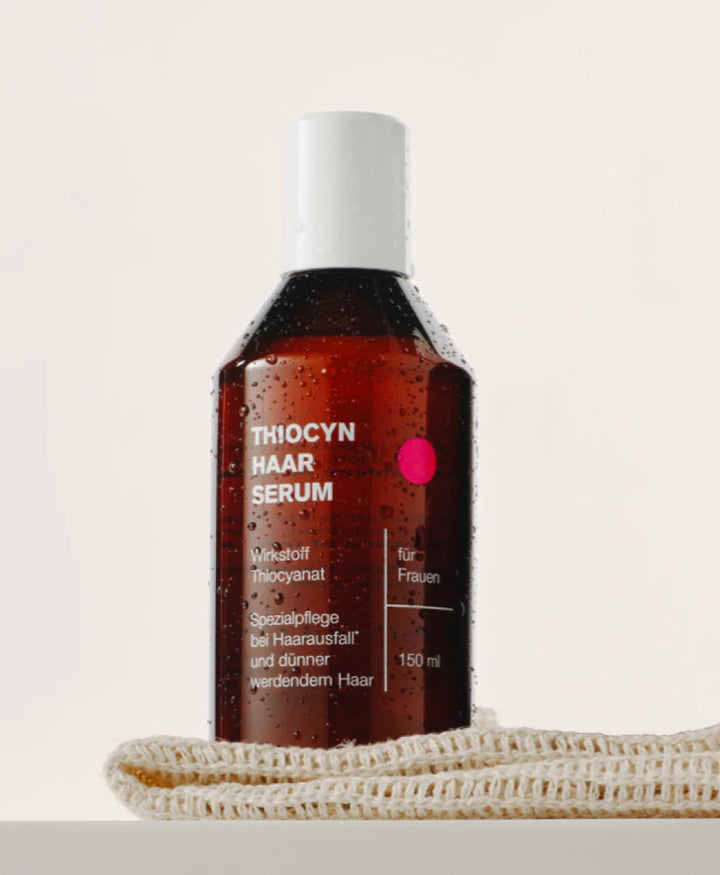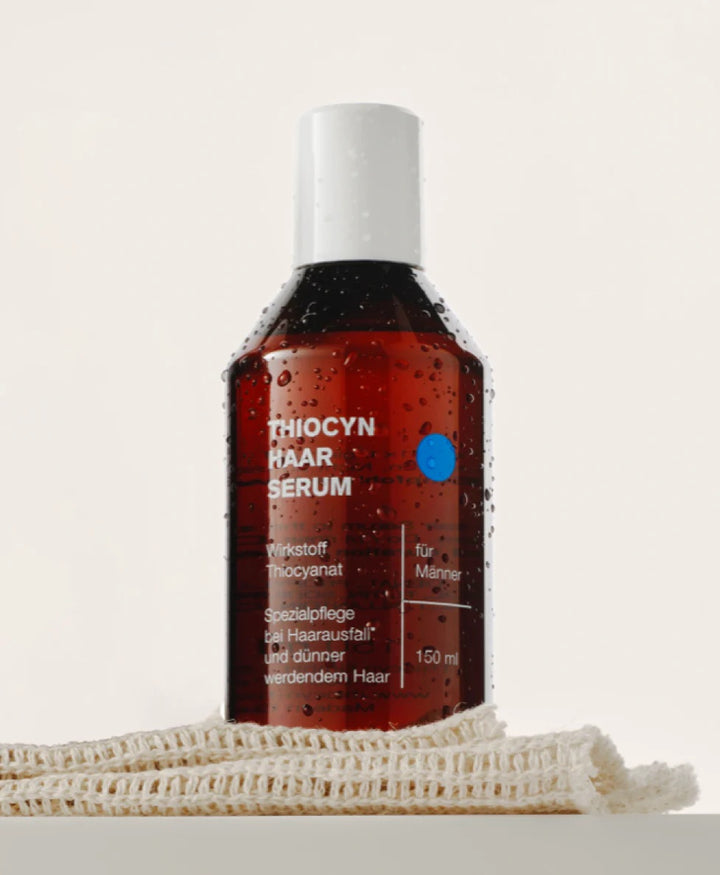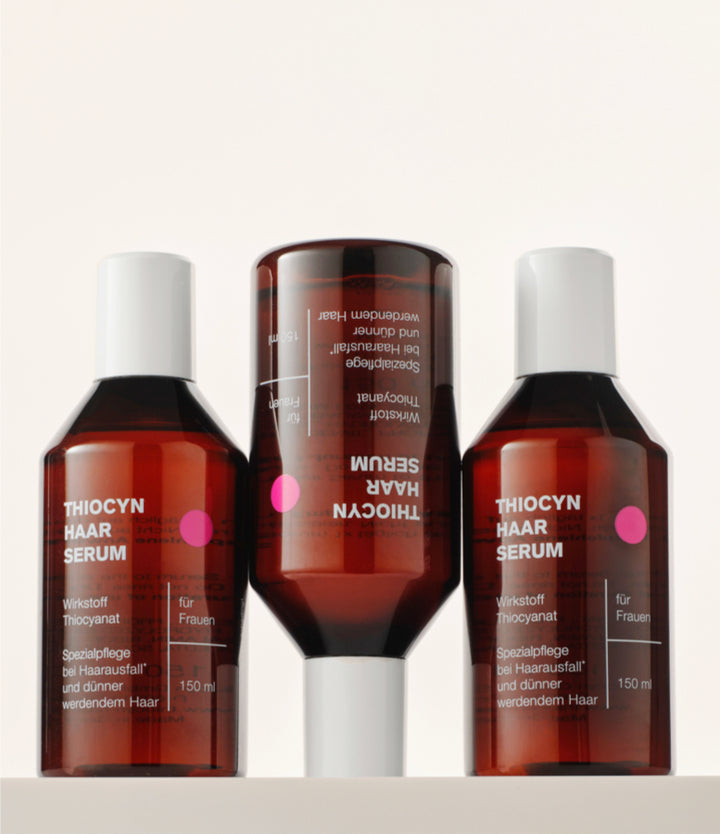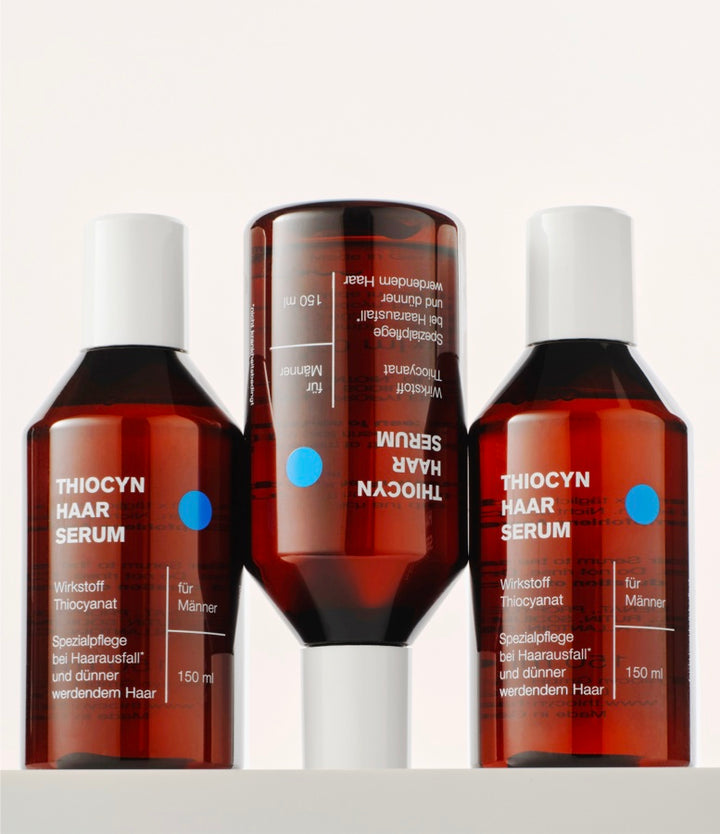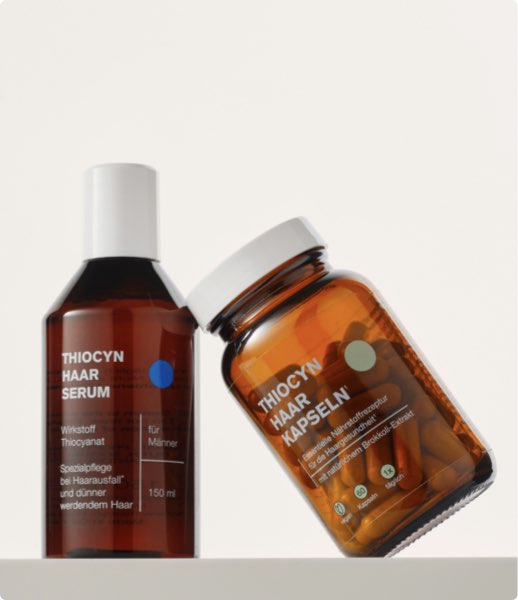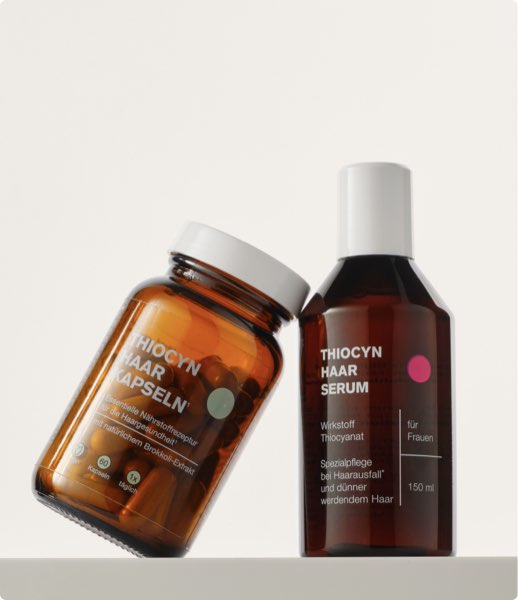| 04. July 2023
When does androgenetic alopecia begin in women?
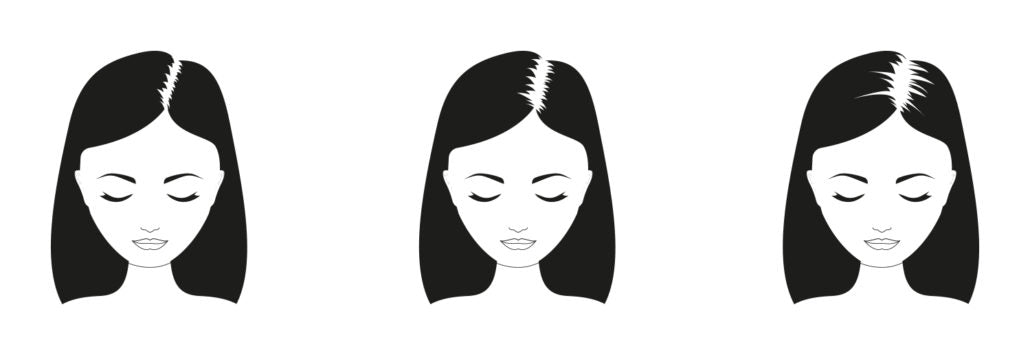
- Androgenetic alopecia affects not only men but also women.
- Androgens, male sex hormones, encounter sensitive hair follicles.
- The hair follicles and their hair become miniaturized, and hair density, especially at the center parting, visibly decreases.
- Androgenetic alopecia becomes fully apparent in women at the onset of menopause around the age of 50, when major hormonal changes occur.
Hair loss in men can in the vast majority of cases be explained as a androgenetic alopecia (literally: "hairlessness due to male hormones"). Women are also not spared from androgenetic alopecia; however, the gradual hair loss appears much more slowly in them.
Androgenetic alopecia in women
Androgenetic alopecia, or hereditary hair loss, often begins in affected women as early as age 30. The thinning of the hair can be very subtle and easily confused with diffuse hair loss. Initially, the hair doesn't thin, but it doesn't reach its full length. With good styling products and the right hairstyle, hair loss can be successfully compensated for over time.
The full impact of androgenetic alopecia becomes apparent around the age of 50 with the onset of Menopause noticeable when a hormonal imbalance occurs in the female organism. Less female sex hormones (estrogens) are then exposed to more male sex hormones (DHT). As a result, many hair follicles become miniaturized, meaning the regrowing hairs do not grow larger than downy hairs.
Alopecia or hair loss
The dermatological term "alopecia" is often equated with hair loss. However, this is not entirely accurate. Alopecia is the result of excessive effluvium (Latin for "hair loss") and means hairlessness. Alopecia can be temporary or permanent. Doctors therefore distinguish between reversible alopecia, in which the hair regrows, and irreversible, scarring alopecia resulting from damage or destruction of the hair follicles in the scalp, which ultimately leads to hair loss or baldness. If the hair follicles are intact, there is always a possibility of hair regrowth. More …
Diagnosis of androgenetic alopecia
In contrast to androgenetic alopecia in men, where clearly defined areas of hairlessness develop (receding hairline, tonsure), women's hair becomes thinner in the crown region during menopause. Thinning hair At first, it's just a feeling. However, the decreasing hair density can also be precisely measured. Certainty can be provided by a dermatologist's examination using a magnifying glass, a dermatoscope, and, above all, a TrichoScan.
Misprogrammed hair follicles
What happens with androgenetic alopecia? Genetically misprogrammed hair follicles are located in the crown region, whose androgen receptors become increasingly sensitive to dihydrotestosterone (DHT), the most biologically active form of the male sex hormone testosterone. The result is an overdrive of the hair cycle: The number of hairs in the growth phase (anagen hairs) decreases, while the number of hairs shed by the hair follicle (telogen hairs) increases.
Treatment of hereditary hair loss
The treatment of weakened hair follicles in women also aims to pharmacologically reverse the shortening of the hair cycle and block the influence of androgens on the hair root.A logical approach is to compensate for the estrogen deficiency by taking hormones. Premenopausal women are often prescribed the birth control pill. When using estrogen combination preparations for hormonal contraception or hormone replacement therapy, doctors ensure that the progestins in the formulation do not cause hair loss. However, more and more affected women are also seeking alternative active ingredients that do not interfere with hormonally controlled metabolic processes.
Wanted: Active ingredients without side effects – Thiocyanate
An active ingredient that strengthens the hair root and protects it against growth-disrupting factors is the natural molecule ThiocyanateThe patented thiocyanate formula of Thiocyn Hair Serum promotes cell division directly at the hair root, where hair growth occurs.
Read by 23,000 people
Do it like 23,000 others and find out how you can improve your hair health - with great offers and discounts as well as helpful advice
